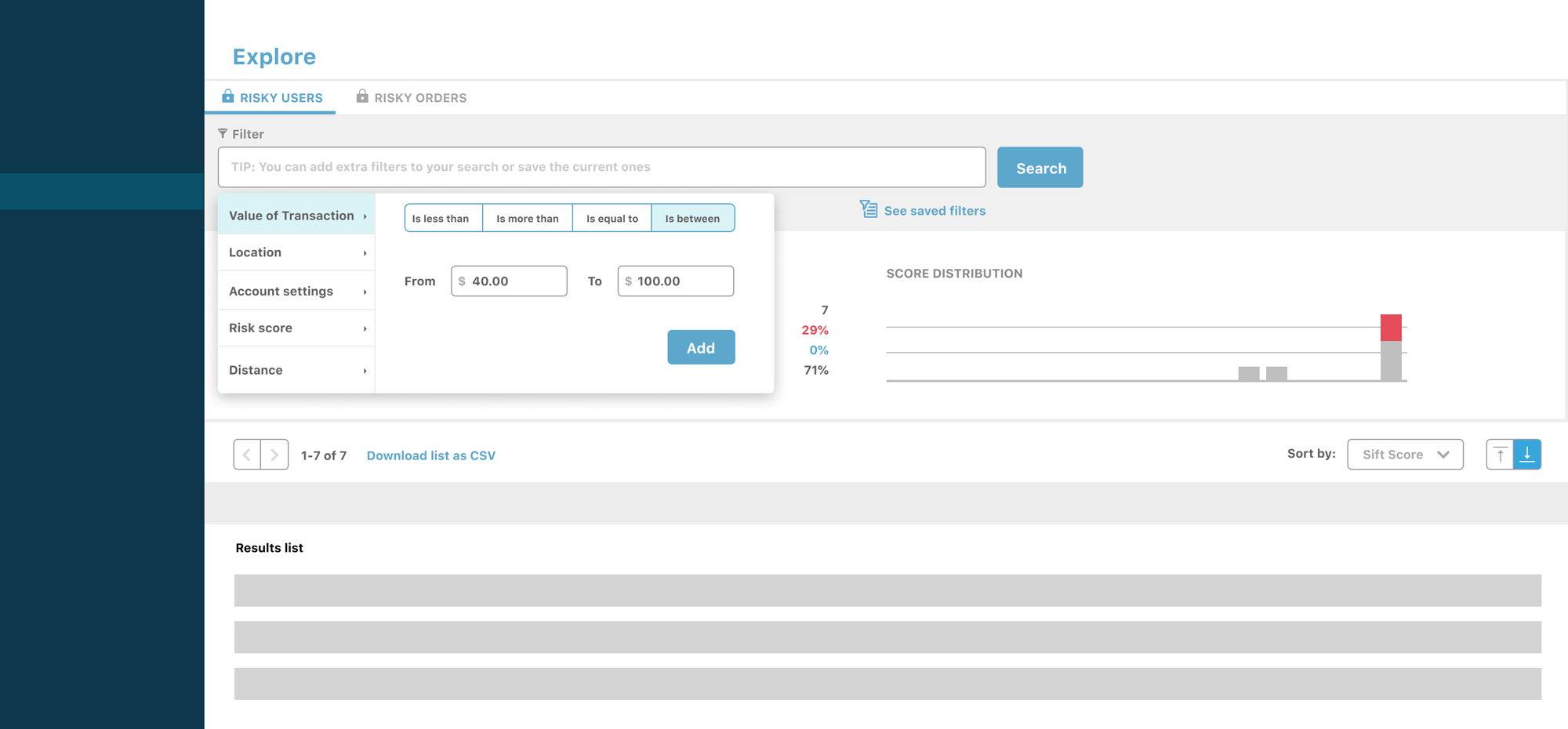Food Delivery platform
Fraud Filter
Problem
For a food delivery platform, I had to create in 5 hours a feature for the fraud prevention tool. The system is used by agents to detect possible fraud cases in orders made by users and had no smart filtering system, just a transaction list with potential fraud cases for the manual review and a limited sorting system.
The agents want now to make use of their expert domain knowledge as fraud officers and find fraud cases based on known patterns. Currently they can only sort the review cases by the risk score. The patterns they want to look for are a combination of values from different data sources, e.g. order time, article category, distance between customer address and delivery address, amount of high-risk connections, etc.
How might we help users (fraud agents) to filter transactions with different combinations of filter types (different data sources) and include or exclude (inverting) a specific value or a value range, which can be entered by the user for every filter type, e.g. a lower birthdate than 28 and a higher distance than 43 kilometers as a final filter combination.
As an additional request, the users also want to save applied filter combination after they successfully found fraud cases with it, to re-apply the combination again during the next days.
Create
Idea, sketches, concept, new elements based on existing design systems, interaction pattern, mock up and prototype.
Usage
Employers from a food delivery platform in the fraud prevention department.
Approach
- Understanding the need of users and the task that they need to complete on the platform;
- Filter research: how do filters work, reference research, categories division;
- Think about the types of filters that could be used: range, is or ist't, etc...;
- First sketches by hand, breaking down the problem
- Think about the impact and how to measure success, which metrics to look for, what type of data to collect;
- First mock ups and a prototype (made in Figma) ready to be tested with users
Metrics
The goal of the filter is to explore fraud cases and check patterns that can be flagged as fraud.
Without the filter, users might have to spend a lot of time going one by one and making a decision on each case.
With the new filtering system, it’s expected that the user can find those patterns quicker and therefore, make a decision quicker.
A good way to measure the success would be measuring the amount of fraud cases they could make a decision on in a certain period of time. (Cases per day / Cases per month).
In the long run, once the Fraud data model is improved based on the new patterns that were found, another way to measure will be to measure the revenue growth by preventing new fraud cases.
First sketches:

Mock up screens:


You can check the full presentation of the case with a link to the prototype here.